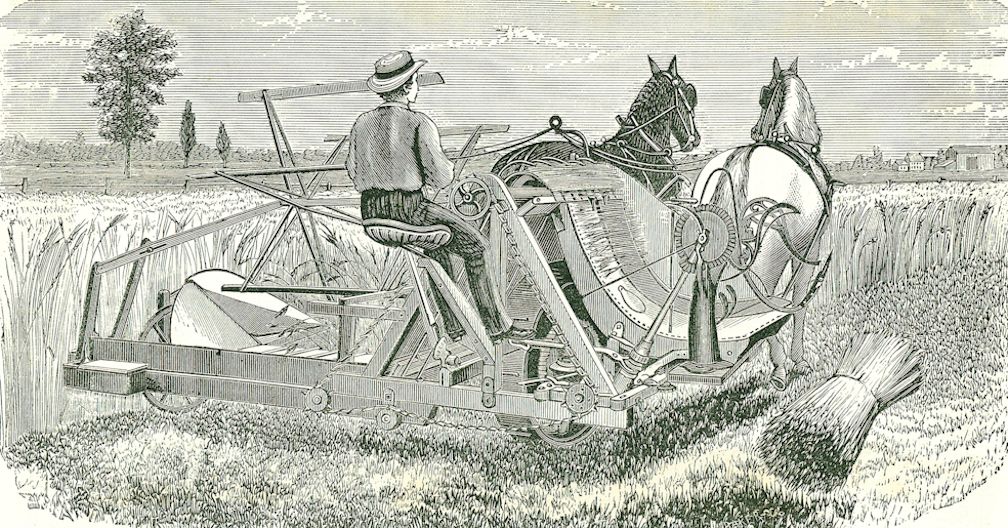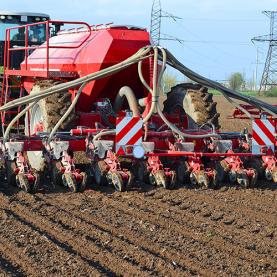The history of arable farming
Agriculture developed with social and technical innovations and as humanity settled into a less nomadic lifestyle. Arable farming became widespread in Antiquity, then the medieval agricultural revolution influenced demographic, economic and urban expansion. Cultivation without leaving land fallow first appeared in the 16th century. In the 19th century, scientific advances, such as mechanisation and artificial fertilizer improved yields. Crops became specialised by region.
Evolution of arable farming since Neolithic times
Arable farming, or the large-scale cultivation of crops on tracts of agricultural land, first appeared around 11 000 years ago. At the end of the Paleolithic period, nomad populations moved on from gathering food to farming. With the domestication of cereals, farming systems and human settlements developed hand in hand. Wheat, corn and rice were first grown in small areas nearby. Although for a long time the Middle East was considered the cradle for this evolution, researchers have identified farming centres dating from the same period in various places around the world.
Over time, production areas expanded and the tools used by the first farmers allowed them to farm resources in greater quantities, thus leading to the formation of the first villages. Population growth meant a greater volume of food was required, hence farmland increased and arable farming began.
Farming spread from Antiquity onwards. Improved irrigation systems allowed production in different seasons and cereals became the staple food for whole societies, or entire civilisations even. Wheat was grown in Europe, rice in Asia, sorghum in Africa and potato and quinoa farming became established in the Andean regions.
During the Middle Ages in Europe, the plough and the swing plough enabled peasants to work the land more productively. Medieval farmers worked larger tracts of arable land, cultivated on a yearly basis based on a three-year rotation system. The evolution of medieval agriculture played a prominent role in the growth of the population, the economy and towns. However, famine and other food crises in the 15th and 16th centuries curbed the growth of field crop cultivation.
In the late 16th century, agricultural innovations affected the farming of arable land: Farming without fallow periods was gradually developed and introduced, thereby accelerating food production. This new practice was used to produce both fodder and cereals. Yield was also improved through the selection of more productive varieties.
The Industrial Revolution in the 19th century brought technical and technological advances which had an impact on the development of arable farming. Steam engines, followed by the combustion engine, fertilizers and treatment products all arrived on the scene. Farmers who produced crops for sale began to specialise. Each region then had its own type of farming, such as cereal crops, market gardening or orchards and so on.
Today, arable farming is faced with new challenges which require new methods: agriculture, whether intensive or extensive, is becoming sustainable and environmentally friendly, aiming to protect the environment and thereby guarantee future production.
MAZOYER, Marcel et ROUDART, Laurence, 2002. Histoire des agricultures du monde : du néolithique à la crise économique. Paris : Éditions du Seuil. ISBN 9782020530613.
FERAULT, Christian et LE CHATELIER, Denis, 2009. Une histoire des agricultures. Paris : Éditions France Agricole. ISBN 9782855571645.
TANNAI, Alexandre, 2014. Histoire des agricultures : de la première révolution agricole à nos jours. Saint-Denis : Édilivre. ISBN 9782332645418
BALTER, Michael, 2013. Farming Was So Nice, It Was Invented at Least Twice [en ligne]. Science. 4 juillet 2013. [Consulté le 28 février 2016]. Disponible à l'adresse : http://www.sciencemag.org/news/2013/07/farming-was-so-nice-it-was-invented-least-twice





